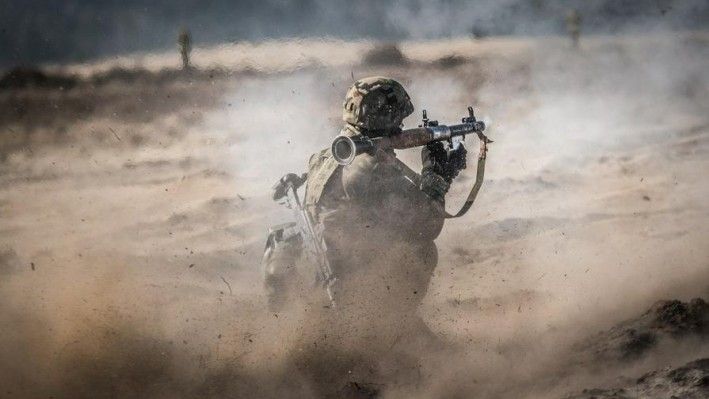Poland Makes Steps Towards Acquiring “Grot” Anti-Tank Weapon System

The Armament Inspectorate of the Polish Ministry of Defence has initiated a technical dialogue aimed at specifying the requirements and logistics-related matters associated with the acquisition of light-weight single-use anti-tank grenade launchers. The adopted form of dialogue is to ensure safety also allowing for rapid preparation of the procurement procedure.
The acquisition programme concerning the single-use anti-tank grenade launchers in Poland is known as “Grot” [Arrowhead]. The technical dialogue planned is to be carried out between 2nd and 3rd April 2020, while the submissions are going to be accepted until 2nd April, electronically. Meanwhile, confirmations in writing can be sent until 6th April.
The dialogue is expected to take place remotely, spokesman for the Armament Inspectorate, major Krzysztof Płatek announced. Electronic means of communication are going to be employed, and the participants are going to send responses to inquiries prepared by the Inspectorate. This form of dialogue is related to the security measures adopted due to the COVID-19 outbreak. At the same time, the above is to make it possible to execute the procedure.
Earlier on, Płatek had suggested that the procurement procedure is expected to begin this year. According to the Inspectorate, the dialogue is aimed at assessing the preliminary administrator-defined requirements compliance when it comes to the offered equipment. The dialogue is also going to specify the conditions pertaining to logistics, the certainty of supplies and training activities.
Furthermore, it is assumed that the cost of acquisition, operational use and decommissioning of the equipment, as well as the timeline for the whole process, are all going to be estimated as a part of the procedure.
When analyzing the specification-related inquiries, one shall note that “Grot” is going to be used for the purpose of neutralizing armoured carriers and infantry fighting vehicles. The weapon is also to make it possible to neutralize main battle tanks if those are hit in their weaker points. The weapon is also to make it possible to act against the older tanks that are not equipped with any additional armour (slat armour for instance) or active protection measures.
The announcement suggests that the Inspectorate is going to be verifying the RHA (Rolled Homogeneous Armour) penetration, including penetration performance when ERA (Explosive Reactive Armour) is applied (ERAWA 1 and ERAWA 2 for instance). Furthermore, the grenade launcher is to have an ability to act against light fortifications and reinforced concrete structures.
The Inspectorate is also willing to acquire information on the specification of the equipment (dimensions, weight, range or effective range) within the framework of the dialogue. The Polish procurement organ will also be interested in warheads, the time required to employ the weapon when stowed or the ability to safely launch the grenade when in a small room.
The Inspectorate is also willing to find out whether the launcher design would allow the soldiers to move freely around, with the required equipment and whether the weapon would be simple in use. Another matter that is subject to the organ’s scrutiny is whether an individual soldier can carry the weapon.
Furthermore, the Polish procurement body is willing to analyze the weather sealing and resistance to man-made conditions (smoke, ESD, HEMP) and whether the weapon is safe to use after atmospheric discharges (CEMP)
Some questions also analyze the current use of the offered system and its presence in the inventory of the armed forces around the world. The Inspectorate is also willing to check whether the system in question has been employed in combat. Furthermore, the grenade launcher shall meet the final requirements for at least 2 decades from now.
The announcement also includes inquiries about acquisition and supply costs (unit- and total costs) when 10 thousand, 50 thousand and 150 thousand examples are procured. Training and manufacturing and servicing license costs are also mentioned. The above also includes relevant tools.
Anti-tank grenade launchers procurement (single-use/multiple-use ones) have been facing delays for years now. This happens even though this armament is relatively cheap when compared to other, complex platforms, such as main battle tanks or multi-role combat aircraft. However, systems as such are very important as they allow to establish anti-tank capabilities at the squad level. Obviously, this would take place only after the launchers and projectiles are acquired in high quantities allowing for saturation of the units belonging to the Land Forces and Territorial Defence Forces. Since the last year, the latter component has been the administrator of this type of weapon.
Saturating the military with cheap and effective anti-tank assets is a good solution that remains within reach, to act against the potential aggressor that has numerous armoured vehicles at its disposal.
So far the Polish troops have been using the obsolete RPG-7 launchers, and minor quantities of Carl Gustaf, AT-4 and RPG-75 systems - in SOF and airborne units. Alongside the Grot programme on the single-use system, the Technical Modernization Plan also envisages acquisition of a multi-purpose, multiple-use grenade launcher. Details on that acquisition are unknown as for now.